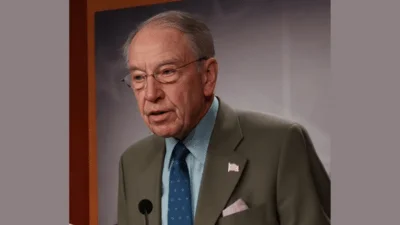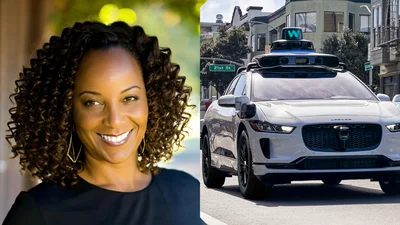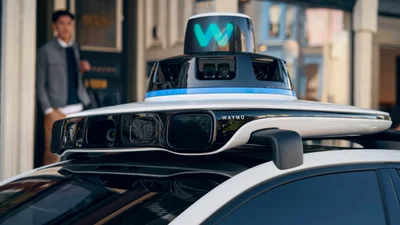Thousands of people are needlessly dying on U.S. roads, according to a safety advocacy group.
The only way to reduce the toll, according to Advocates for Highway and Auto Safety is “bold leadership and immediate action by the U.S. Department of Transportation, Congress and state elected officials.”
The Advocates pointed to a report from the National Highway Traffic Safety Administration that said 38,824 people were killed in motor vehicle crashes in 2020. That was a 21% increase in the fatality rate from 2019, and the highest annual total since 2007.

Advocates for Highway and Auto Safety President Cathy Chase.
| Submitted
Advocates for Highway and Auto Safety President Cathy Chase told US DOT Newswire that roadway behaviors traditionally were linked to the increase in fatal crashes in 2020. Chase said the National Highway Traffic Safety Administration report shows that in 45% of fatal crashes that year, drivers of passenger vehicles were either speeding, driving drunk or not wearing a seat belt.
“Fatalities increased in all three areas: alcohol-impaired driving (14%), speeding (17%) and unrestrained occupant fatalities (14%),” she said. “In short, while the overall number of crashes occurring in 2020 decreased, those that did occur were more deadly, resulting in the crash death spike reported by NHTSA. These developments are both alarming and tragic considering many of these fatal crashes are preventable.”
The COVID-19 pandemic began in early 2020, and there is evidence this was a significant element in the increase in fatal crashes.
“During the early phase of the pandemic, some drivers took advantage of emptier roadways and turned them into ‘racetracks,’” Chase said. “We saw widespread reports of speeding, and we know that the faster a vehicle is traveling when it crashes, the greater the force in a crash and the more likely it is for fatalities to occur.
"Hard data on how the pandemic may be causing changes in driving behavior is not available, but studies during this period indicate higher levels of stress and more alcohol consumption, both of which can impact behavior behind the wheel and lead to disastrous consequences,” she added.
Pedestrian and bicyclist fatalities have been trending upward as well, she said, and ways to reduce this toll are not being utilized.
“In 2020 pedestrians, bicyclists and other non-vehicle occupants accounted for 20% of crash fatalities, according to NHTSA," Chase said. "When behaviors like speeding and impaired driving are more prevalent, vulnerable road users (VRU), who lack the protective infrastructure of a vehicle, are more susceptible to injury or death.
“For many years, Advocates has pressed for hood and bumper safety standards that reduce the risk of injury or death for VRUs when crashes happen," she added. "This is particularly important in the U.S., where a trend toward larger, heavier passenger vehicles has increased the danger to pedestrians, bicyclists and others."
She said automobile manufacturers will only increase safety in their vehicles if required to do so.
“We have seen a consistent push for voluntary agreements on vehicle safety issues as a substitution for new rules and performance standards,” Chase said. “These agreements have no enforcement mechanism, meaning compliance is totally up to the manufacturer, and there is no way to ensure that safety equipment will perform as expected. One example is a 2015 voluntary agreement by 20 automakers to make AEB with forward-collision warning standard in virtually all passenger vehicles by September of this year.
“In 2021 only 58% of GM vehicles and 43% of Fiat Chrysler vehicles sold in the U.S. complied with the AEB voluntary agreement," she added. "Similarly, detection and alert technology could prevent tragic ‘hot car’ deaths, but again, segments of the auto industry have lined up behind an insufficient voluntary agreement on this issue.”
Opposition to safety measures defies common sense, Chase told US DOT Newswire.
“Opposition to vehicle safety requirements and performance standards also runs counter to the ultimate goal of ensuring that all road users benefit from safety upgrades,” she said. “For example, AEB and other crash avoidance technologies are often only available on high-end models or as part of expensive add-on packages which some car buyers cannot afford."
Chase's group is urging the Biden administration to act expeditiously on proven solutions to address horrific increases in roadway crash deaths.
“Last November, the Infrastructure Investment and Jobs Act was enacted into law, and it contains a number of vitally important vehicle and roadway safety directives,” Chase said. “Among these are requirements for automatic emergency braking (AEB) in new passenger vehicles and large commercial trucks as well as impaired driving prevention technology in new cars."
Advocates for Highway and Auto Safety has been urging the U.S. Department of Transportation (DOT) to view the provisions of the IIJA as a “floor,” not a “ceiling,” for what must be achieved, she said.
“Considering that the DOT has committed to work toward the goal of zero traffic deaths, a comprehensive effort that seeks to achieve maximum safety outcomes for all road users must be implemented with urgency,” Chase said.
Every year, Advocates releases the Roadmap of State Highway Safety Laws, a report detailing proven countermeasures that all 50 states and the District of Columbia should enact to prevent crashes, deaths and injuries.
“This year’s report found that 390 traffic safety laws are needed across the country, addressing issues such as seat belt use, distracted driving, impaired driving, child passenger safety, and teen and novice driver safety,” Chase said. “A number of states have introduced legislation this session that would help curb this public safety crisis, and we are actively working with state and local partners to try to bring them over the finish line.”
Advocates has listed 16 recommended laws that would increase highway safety. No state has approved all 16.
More could be done, but a lack of political will is stalling safety reforms and allowing the fatal numbers to rise. Chase said the lack of interest shown in this by politicians and government officials reflects the culture as a whole.
“Our society has become too complacent in accepting motor vehicle crashes," she said. "Nearly 40,000 people being killed in any other mode of transportation would never be tolerated."
Advocates for Highway and Auto Safety is an alliance of consumer, medical, public health, law enforcement, safety groups and insurance companies and agents working together to make the nation's roads safer.









